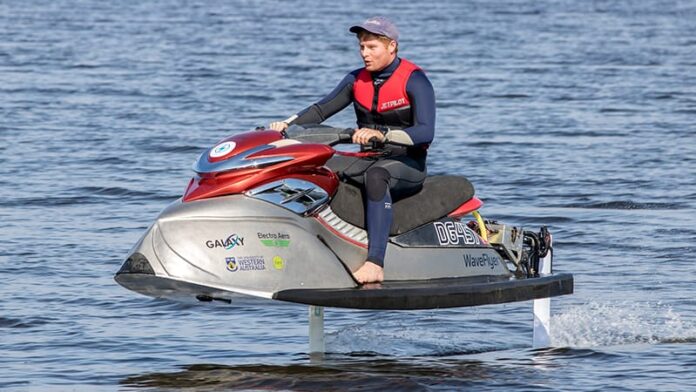From sleek yachts and naval vessels to high-speed ferries and autonomous underwater vehicles, watercraft engineering is at the heart of modern maritime innovation. It combines advanced mechanical design, hydrodynamics, materials science, and electronics to create vessels that move efficiently, safely, and sustainably across or beneath the water’s surface.
In a world increasingly focused on green technology, automation, and safety at sea, watercraft engineers play a pivotal role in shaping the future of global transport and marine exploration.
What Is Watercraft Engineering?
Watercraft engineering is a specialized field of mechanical and marine engineering that focuses on the design, construction, maintenance, and optimization of vessels used for transportation, defense, research, and recreation.
It involves studying how watercraft interact with fluid environments — analyzing hydrodynamic performance, buoyancy, propulsion, and stability. Engineers apply these principles to a broad range of craft, including:
- Cargo ships and tankers
- Naval ships and submarines
- Passenger ferries and cruise ships
- Fishing vessels
- Yachts and recreational boats
- Jet skis and personal watercraft
- Autonomous surface and underwater drones
Beyond design, watercraft engineers are responsible for ensuring safety, efficiency, and compliance with international maritime standards such as SOLAS (Safety of Life at Sea) and IMO environmental regulations.
Core Disciplines of Watercraft Engineering
Watercraft engineering integrates several technical disciplines to produce vessels capable of operating under demanding marine conditions.
1. Naval Architecture
Naval architecture deals with the overall structure, form, and performance of the vessel. Engineers focus on hull design, weight distribution, buoyancy, and stability. The goal is to ensure that the craft performs well in different sea states while maintaining efficiency and safety.
Computational fluid dynamics (CFD) simulations are commonly used to study water flow around hulls, helping designers reduce drag and improve fuel economy.
2. Marine Propulsion Systems
Propulsion systems are the engines that move the vessel through water. Engineers design and maintain various propulsion technologies such as:
- Diesel engines
- Gas turbines
- Electric and hybrid propulsion
- Water jets and propellers
- Emerging hydrogen fuel cell systems
Modern watercraft engineering focuses on energy efficiency and reducing emissions, making hybrid and electric propulsion increasingly common in commercial and leisure vessels.
3. Structural Engineering
Vessel structures must withstand extreme conditions — waves, pressure, impact, and vibration. Structural engineers use advanced materials like aluminum alloys, stainless steel, and fiber-reinforced composites to achieve strength without excessive weight. Finite element analysis (FEA) helps test structural integrity virtually before fabrication.
4. Control and Automation Systems
With the rise of digital technology, many vessels now feature integrated control systems. Engineers design electronic controls for navigation, stability, engine management, and safety monitoring. Automation is particularly critical for unmanned surface and underwater vehicles (USVs and UUVs).
5. Materials and Corrosion Engineering
Saltwater is notoriously corrosive. Engineers select materials and protective coatings to resist rust and biofouling. Ongoing research into smart coatings, cathodic protection, and anti-fouling technologies helps extend vessel lifespan and reduce maintenance costs.
Design and Manufacturing Process
Designing a new watercraft involves multiple stages, each requiring precise coordination between engineers, architects, and technicians.
1. Conceptual Design
At the early stage, the client’s needs are translated into a set of performance goals — speed, range, capacity, and operating environment. Engineers draft initial hull forms and power requirements.
2. Preliminary Design and Analysis
This stage involves computational modeling and testing. Hydrodynamic simulations predict how the craft will behave in water, while structural analysis ensures it can handle stress and impact loads.
3. Detailed Design and CAD Modeling
Using advanced CAD software, engineers create full 3D models of the hull, propulsion system, and internal structures. Components are optimized for weight, durability, and ease of manufacturing.
4. Prototype Testing
Scale models are often tested in towing tanks to measure resistance, stability, and maneuverability. These results are compared with computer simulations to refine the design.
5. Construction and Assembly
Shipyards and workshops use modular construction techniques — building sections separately before final assembly. Precision welding, advanced composites fabrication, and robotic automation enhance quality and efficiency.
6. Sea Trials and Certification
Before a vessel enters service, it undergoes rigorous sea trials to verify speed, stability, handling, and safety systems. Once it passes, regulatory bodies issue certifications for operation.
Modern Innovations in Watercraft Engineering
The maritime industry is rapidly evolving, driven by environmental goals and technological advancements. Today’s engineers are developing new solutions to make watercraft safer, smarter, and more sustainable.
1. Green Propulsion and Sustainability
The global move toward decarbonization is transforming marine propulsion. Electric and hybrid systems, LNG (liquefied natural gas), hydrogen fuel cells, and even solar-assisted propulsion are reducing emissions and fuel costs.
Research into hydrodynamic optimization — smoother hulls and efficient propellers — further enhances energy efficiency. Some Singapore-based engineering firms specialize in designing low-emission craft suitable for tropical and coastal waters.
2. Autonomous and Remote-Controlled Vessels
Autonomous surface vehicles (ASVs) and underwater drones are revolutionizing oceanographic research, defense, and offshore industries. Engineers integrate AI-driven navigation, sensor fusion, and remote control systems to enable these craft to perform missions without human crews.
3. Advanced Materials
Lightweight composite materials like carbon fiber and Kevlar are replacing traditional steel in high-performance craft. These materials offer better corrosion resistance, improved fuel efficiency, and higher speed potential.
4. Smart Monitoring Systems
Modern vessels incorporate IoT (Internet of Things) technology for real-time monitoring of engines, fuel usage, and structural health. Predictive maintenance systems alert operators before issues occur, improving reliability and safety.
5. Noise and Vibration Reduction
Acoustic engineering plays a vital role, particularly in naval and research applications. Quieter propulsion systems reduce underwater noise pollution, benefiting marine ecosystems and stealth operations.
The Role of Watercraft Engineering in Singapore and Beyond
Singapore’s strategic location as a global maritime hub has made it a leader in watercraft and marine engineering. The country’s ports, shipyards, and research institutions drive continuous innovation in vessel design, automation, and environmental compliance.
Companies in Singapore specialize in:
- Design and maintenance of commercial and pleasure craft
- Marine systems integration
- Water treatment and pool systems (for leisure water facilities)
- Offshore engineering and vessel retrofitting for sustainability
Educational institutions such as NUS and Singapore Polytechnic also offer marine and offshore engineering programs, training the next generation of watercraft engineers.
Globally, watercraft engineering contributes to shipping efficiency, renewable energy (via offshore wind support vessels), and defense technology — sectors that rely on precision and innovation to operate safely in dynamic marine environments.
Career Opportunities in Watercraft Engineering
The field offers diverse and rewarding career paths for engineers passionate about marine technology. Potential roles include:
- Naval Architect – Designs hull forms and structural layouts.
- Marine Systems Engineer – Develops propulsion, electrical, and control systems.
- Hydrodynamics Specialist – Studies fluid interactions and resistance.
- Production Engineer – Manages manufacturing and assembly.
- Maintenance & Reliability Engineer – Ensures vessel systems operate efficiently.
- Research Engineer – Works on advanced propulsion or sustainable marine technology.
With global maritime trade expanding and environmental regulations tightening, the demand for skilled watercraft engineers continues to rise.
The Future of Watercraft Engineering
The next decade promises even greater transformation in the field. As the world shifts toward automation, digitalization, and sustainability, engineers will integrate AI, renewable energy, and advanced materials into every level of vessel design.
We can expect to see:
- Fully electric ferries operating in coastal cities
- AI-controlled cargo ships that navigate autonomously
- Modular vessels that can be reconfigured for multiple missions
- Enhanced environmental compliance technologies to protect oceans
In short, watercraft engineering is not just about building ships — it’s about shaping the future of maritime mobility and stewardship.
Final Thoughts
Watercraft engineering embodies the perfect blend of science, technology, and creativity. Whether it’s crafting luxury yachts, designing autonomous drones, or developing eco-friendly propulsion, engineers in this field drive innovation across oceans and industries.
As sustainability, safety, and efficiency become global imperatives, watercraft engineers will continue to pioneer solutions that redefine how humanity travels, explores, and thrives on the world’s waterways.
Their work ensures that every vessel — from the smallest dinghy to the largest ocean liner — reflects the brilliance of modern engineering and the enduring spirit of exploration beneath the surface.

